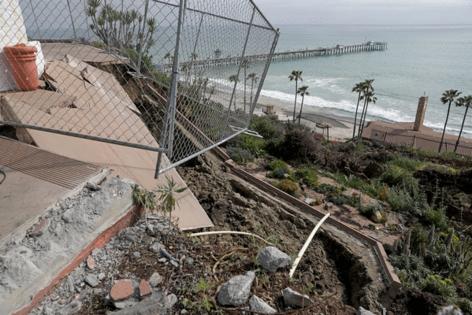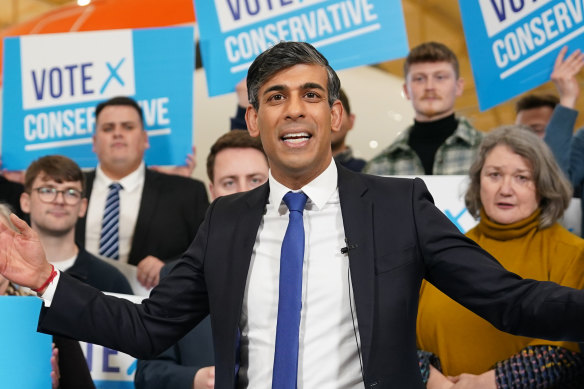Google has fired employees for protesting ties to Israel beginning with Project Nimbus. One such employee, Mohammad Khatami, argues Google cannot stop justice
Mohammad Khatami
29 Apr, 2024

Protestors, including Google workers, gathered in front of Google's San Francisco offices demanding an end to its work with the Israeli government. [Getty]
The software engineering job offer I received from Google came at the perfect time.
I was in my senior year of college, lacking confidence and riddled with anxiety.
The email from Google in my inbox validated all the years I spent studying. The hard work I had put into sharpening my coding skills had paid off, and I felt elated.
When I started working at Google in August 2022, I remember sending my parents photos of the office and cherishing their amazement. I remember bringing friends in to try the food and to experience an office that was famous for feeling like a college campus. I loved seeing their smiles looking at the New York City Financial District skyline from the 14th-floor terrace.
Google is famous for being a 'worker-friendly' workplace combining forward-thinking engineering with free food, massages, and even nap pods. How wrong that all turned out to be.
A few months after I joined the company, my excitement about this job was shattered when I learned about Project Nimbus, Google’s and Amazon’s $1.2 billion cloud computing contract with the Israeli government. The details of the agreement were deeply unsettling: massive cloud server clusters of vague purpose would be built within the borders of Israel, where indigenous Palestinians are subject to military occupation and apartheid rule, routinely persecuted, dehumanized, displaced, and killed in an ongoing, state-sponsored process of ethnic cleansing aided by high tech infrastructure.
Security and management of the clusters would be handed over to Palestine's occupier, potentially allowing the Israeli military free reign to use Google's technology however they wanted despite Google's repeated denials that are disputed even by Israel's military.
RELATEDPerspectivesMona ShtayaOctober 7 and the Gaza genocide
Worker dissent and public opinion objections to the deal were to be contractually ignored under the deal with Israel, despite clear evidence that the project would serve the goals of the Israeli military. To avoid criticism, Google would continuously deny the military nature of the contract for years even as Israel itself has said otherwise.
When Israel began its medieval siege against Gaza over 200 days ago, my fears about working for Google intensified. It quickly became clear that Israel intended to commit a genocide and was leveraging artificial intelligence to enable it.
To commit a massacre of this scale, data is as important as ammunition. The Israeli occupation boasts about the sophistication of its targeting systems, which are developed by training machine learning models on extensive data collected through invasive surveillance of Palestinians.
Israel prefers striking targets while individuals are in their family homes, tracking Palestinians using automated systems with depraved names like “Where’s Daddy.” Merely returning home exposes Palestinians and their families to risk. When questioned about their preference for using conventional bombs over precision-guided weapons that could minimize civilian casualties, the Israeli military stated that they do not see the value in expending expensive munitions on “unimportant people.”
In response to Israel’s crimes of genocide and collective punishment, Google has doubled down on their relationship with the Israeli military.
RELATEDIn-depthHugo GoodridgeFrom search engine to the military industrial complex
As recently as a month ago, a Google contract proved direct services to the Israeli military, confirming that company leadership had been misleading workers for years regarding the military applications of Project Nimbus.
In other words, Google workers are expected to develop technology that can be evidently used to streamline Israel’s genocide, and we are expected to remain silent about it.
Once upon a time, Google’s slogan was “Don’t be evil.” They abandoned this motto in the last decade to transition into a glorified military contractor.
What appeared to be an incredible job from the outside now resembles a dystopian adult daycare centre to me. The reality of working at Google is that it is a place where a chipper attitude, a false veneer of liberalism, and a collection of inconsequential, constantly shifting projects, are fervently promoted by Google’s propaganda to obscure the company’s business model that seem to include profiting from no-questions-asked militarisation that can enable genocide.
With just a few public statements about how black lives matter, Google could pretend that it hadn’t - allegedly - made billions off of the destitution of black people in the Congo. With a tweet celebrating Indigenous People’s month, Google could unironically evade criticism for operating an office in Tel Aviv, a city built on the ethnic cleansing of Palestinians in Jaffa. Google mastered the song and dance of wokeness for the public, and internally, it keeps an iron grip on dissent.
For years, I and other Googlers with the No Tech for Apartheid campaign opposed Project Nimbus within the company. We shared petitions, sent internal memos, and submitted ethics reviews. In response, we were doxxed, harassed, silenced, ignored then ultimately fired in order to ensure that Google's profits in occupied Palestine and the global military industry remained unchallenged.
Many workers witnessed this repression, but company culture promotes fear and apathy over integrity. Google is two-faced. The colorful office, scooters, music rooms, and desserts all serve to distract from the backdrop of aggressive retaliation and a culture of fear. Google can only sustain profits from violence if it is able to ensure the complicity of its workers. And it is disheartening how some of the world’s brightest minds can be placated by comfort and used to increase wealth at the expense of human life.
But make no mistake; Google is destined to fail. Workers are waking up to the reality of their exploitation, and our ability to stand against the unethical use of our labour is only growing stronger. Abuse and oppression are unsustainable in the long term.
Today, on Wall Street, Google’s ticker symbol sits next to an upward green arrow—business has been prosperous for the profiteers of genocide. But workers play a critical role in the growing movement for liberation, and we will not forget Google’s complicity.
Justice will prevail.

Follow him on TikTok













